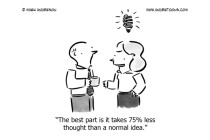LED lighting has long been touted as the smart choice in residential, institutional, and commercial spaces — but what if there were proof LEDs have the potential to actually make us smarter? Innovations and applications using LEDs are enhancing learning environments in exciting ways, such as integrating smart lighting options in classrooms and illuminating modular keyboards to help people learn how to play an instrument. LEDs are quickly becoming the no-brainer choice when it comes to the smart technologies that will usher in the future of education and learning.
The educational space that has seen a dramatic technology overhaul in recent years is the modern classroom. Smart classrooms incorporate integrated technologies like computers, tablets, audience-response technology, networking, and audiovisual capabilities to deliver learning opportunities that adapt quickly to an ever-changing technological landscape. According to Tim Hogan, vice-president of education solutions for Acuity Brands, “the [LED] lighting industry has evolved along with the classroom, giving facility managers numerous solutions to enhance the space and reduce electricity consumption.” Some of those options include smart sensors and controls, which help tailor lighting solutions, such as dimming, colour-tuning, and instant-on features, to complement individual classroom needs. For example, different lighting solutions can be specific to instructional, audiovisual, or study modes, and all systems are integrated so that adjustments can be made from one panel or even remotely. As Hogan explains: “Smart LED luminaires are equipped with controls and connectivity that unlock the maximum potential of LEDs.”
In addition to helping create smart learning spaces with integrative technology, recent research has found a correlation between optimal lighting and improved learning outcomes. According to Lighting For People, a web-based platform that connects people, lighting, and business in Europe, “optimized lighting can have positive effects on performance, social behaviour, and also on physical health and well being.” For example, Dutch studies found that lighting with higher illumination levels and higher colour temperature showed positive effects on concentration levels. Other studies found that dedicated light settings, such as increasing blue light levels in the morning, can be used in the classroom to support social behaviour/activities and to support physical and mental health. Specifically, insufficient blue light in the morning can delay the circadian clock, which in turn slows the onset of melatonin, and can lead to health and performance problems. The team behind Lighting For People suggests that optimization of educational lighting systems, which they refer to as ‘Human Centric Lighting’ uses LEDs to help create “an environment that is both stimulating and engaging.”
Another great example of LEDs being used to stimulate and engage is the work of the Opho team and their innovative product called Keys. Keys is the first modular keyboard with full-scale, LED-lit keys that helps users learn how to play the keyboard. Using the optional iPhone dock, Keys connects to two educational apps: Play and Learn. The Play app focuses on learning to play songs note-for-note by following the keys as they light up. The Learn app is set up as “bite-sized lessons” such as learning scales, chords or simple songs. Not only are the 24 keys engineered to be authentic-feeling and responsive (sound output is modified by pressure and resistance much like a piano), they also illuminate 192 colours. In addition, gesture sensors embedded in the keyboard control various features, such as octave or vibrato, with the swipe of the hand. To fully appreciate the technology behind Keys, it helps to see it in action. Keys is anticipated to be a hit among musicians, DJs, keyboard newbies and technology junkies alike. You can pre-order your very own Keys for estimated delivery in August of 2015 by visiting their Indiegogo campaign.
Whether you are looking at retrofitting an elementary school with an integrated LED luminaire system to improve efficiency and optimize learning performance, or you find yourself craving the very latest “Rock Band of keyboards” to give you an advantage over your techie friends, it is clear that LEDs are at the forefront of technology looking to contribute positively to the world of learning and education.
About The Author

-
Serial Entrepreneur, Technologist and Inventor.
My objective is to develop useful products that have a net positive effect in the lives of those that use them and the environment that we live in.
CEO of Mission LED Lighting Company Ltd.
- 2017.05.24LED factsWhy Are Cars Switching to LEDs if They’re Too Bright?
- 2017.05.09Be green & saveHow to Easily Replace T8 Fluorescent Tubes With LED
- 2017.03.07Build a better future7 Things About Explosion Proof LED Lighting You Should Know
- 2017.02.28Be green & saveWhy We Love LED Grow Lights (And You Should, Too!)





Leave a Reply